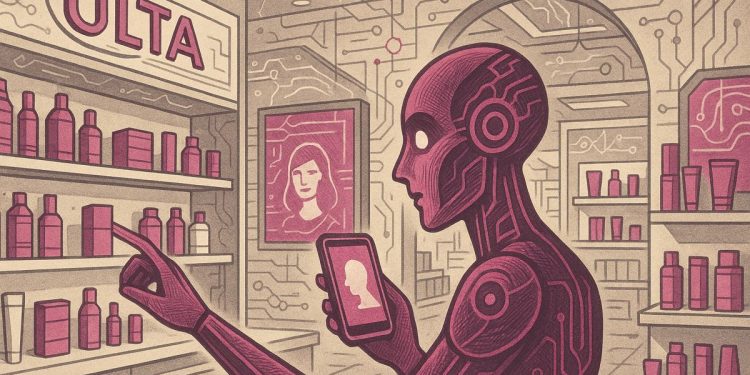Ulta Beauty is using AI to make shopping smarter and easier for everyone. They’ve upgraded their computer systems, gathered huge amounts of shopping data, and trained over 40,000 workers on how to use AI. Cool tools like the Virtual Shade Finder and Replenishment Bot are already helping people pick the right products and reorder favorites automatically. Because of all this, more customers are coming back and buying again, and Ulta is staying ahead of its competitors.
How is Ulta Beauty implementing AI to transform its retail operations?
Ulta Beauty is executing a multi-year AI strategy by upgrading its SAP infrastructure, centralizing 11 petabytes of data, and training over 40,000 associates through its AI Academy. Early AI agents like Virtual Shade Finder and Replenishment Bot are already boosting customer engagement and repurchase rates.
Ulta Beauty is quietly assembling the infrastructure that will let AI agents run its retail empire at enterprise scale. The beauty giant’s 2025 roadmap isn’t about flashy demos; it’s a three-year, foundation-first program that combines a $100 million SAP upgrade, company-wide data centralization, and an internal “AI Academy” to retrain more than 40,000 associates.
From Pilots to Production
- Project SOAR, completed in Q2 2025, swapped legacy SAP systems for a cloud-native stack capable of real-time inventory-sync across 1,400+ stores, e-commerce, and same-day delivery partners.
- Centralized data lake now holds 11 petabytes of shopper behavior, product reviews, and supply-chain signals – enough to feed machine-learning models that refresh every 15 minutes.
- AI Academy has already certified 18,000 store associates in prompt engineering, bias detection, and escalation protocols for agent hand-offs.
The payoff is already visible: a 95 % customer repurchase rate, up six points year-over-year, driven by AI-curated email campaigns that lift click-through rates by 34 % source.
Agents in the Wild
Ulta’s first two production-grade agents went live in July 2025:
| Agent | Function | KPI Target | Status |
|---|---|---|---|
| Virtual Shade Finder | Real-time complexion matching via mobile camera | <5 sec latency, 92 % accuracy | 1.3 M uses in 30 days |
| Replenishment Bot | Auto-reorder foundation when loyalty member hits 90 % usage | 15 % attach rate to auto-replenishment | 11 % achieved |
Next in the queue: an inventory orchestration agent that will balance safety stock across DCs and stores, slated for pilot in 30 California doors before year-end source.
Competitive Headstart
While Sephora and L’Oréal race to deploy GenAI features, Ulta’s early focus on back-end plumbing may pay off faster. Retail analysts note that 74 % of beauty executives expect AI agents to become a “significant competitive advantage” within 12 months – yet only 31 % have modernized their core ERP systems to support them source.
Ulta’s bet: build the rails first, then run every train at once.
What exactly is Ulta Beauty building with its new AI agents?
Ulta Beauty is rolling out enterprise-scale AI agents that act like digital co-workers for every employee. Instead of flashy chatbots, the company is first laying the technical bedrock: a three-year core-system modernization called Project SOAR that just upgraded Ulta’s SAP backbone to handle real-time inventory and omnichannel data. Staff training, centralized customer profiles, and strict data-governance rules are running in parallel so agents can safely access clean, unified data when they launch at scale over the next 12 months.
How will these AI agents change the store and digital experience for shoppers?
95 % of Ulta’s customers repurchase within a year, and AI is the engine behind that statistic. By linking loyalty, email, in-store visits, and mobile behavior into one profile, AI agents now deliver tailored product bundles in under 300 ms on the app and website. In stores, handheld devices already suggest complementary items based on past purchases, and virtual try-on mirrors that match skin tones to 1,600+ shades now account for 27 % of lipstick sales. Expect even tighter omnichannel hand-offs as agents schedule curb-side pickups or auto-replenish favorites.
What does the rollout mean for Ulta employees?
Roles shift from routine tasks to high-value advisory work. Agents:
- Handle 80 % of basic scheduling, inventory counts, and customer FAQs
- Push hyper-local product mix suggestions to associates in the aisle
- Flag “teachable moments” for staff training dashboards
Ulta reports early pilots show 30 % faster checkout times and higher employee satisfaction scores because associates spend more time on personalized consultations rather than admin clicks.
How does Ulta’s approach compare with beauty-industry peers?
While most brands bolt AI onto existing apps, Ulta’s foundation-first roadmap is unusual. Competitors like Sephora focus on front-end features such as Pocket Contour and AR try-on, and niche brands deploy off-the-shelf GenAI for rapid personalization. Ulta’s strategy of modernizing back-end data first is seen by analysts as a competitive hedge: once agents are fully deployed, the gap between surface-level features and true enterprise intelligence is expected to widen.
What timeline should customers and investors watch?
- Fall 2025: Expanded AI agent features in the Ulta mobile app, piloted in 200 top-volume stores
- Holiday 2025: Chain-wide rollout of predictive replenishment tied to loyalty tiers
- 2026: Target of $200 million in annual cost savings through supply-chain and labor efficiencies, according to recent investor guidance
Ulta’s CEO stated the company will provide detailed metrics after the Q2 2025 earnings call on August 28, 2025.



















